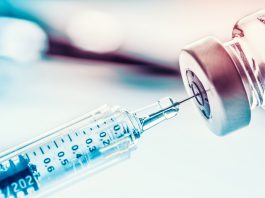Stephen Majors of the Alliance for Regenerative Medicine discusses the successes of the sector, and explains how practices learnt during the COVID-19 pandemic could be useful for the development of cell and gene therapies.
Regenerative medicines are used to treat the root cause of diseases and disorders. Scientists are consistently developing innovative new methods in this area to repair or replace damaged organs, cells, and tissues. It is through the use of such advanced technologies that researchers intend to revolutionise the regenerative medicine sector. They hope to develop cures for some of the most devastating diseases, such as those which cannot be treated through conventional methods.
The Alliance for Regenerative Medicine (ARM) is the global voice of the sector, supporting the development of safe and effective regenerative medicines. In 2021, ARM reported that the regenerative medicine sector experienced a record-breaking year for investment, with $23.1bn raised. Here, Stephen Majors, Director of Public Affairs at ARM, speaks to Innovation News Network about the role and aims of ARM, and the recent successes of the sector.
What are the key aims of the Alliance for Regenerative Medicine?
ARM is an international advocacy organisation dedicated to regenerative medicines and advanced therapies. The Alliance promotes legislative, regulatory, reimbursement, and manufacturing initiatives to advance this innovative and transformative sector, which includes cell therapies, gene therapies, and tissue-based therapies. Over its 12-year history, ARM has become a key global voice of the sector, representing the interests of over 400 members worldwide, including small and large companies, academic research institutes, major medical centres, and patient groups.
ARM promotes clear regulation to accelerate the development of transformative medicines; strives to enable innovative reimbursement models, including outcomes-based agreements, to ensure patient access; addresses barriers to the scale-up of manufacturing of regenerative medicines; and educates stakeholders, including policymakers and the media, with authoritative data and analysis about the sector.
ARM has described 2021 as a “year of firsts” for the regenerative medicine sector. Can you tell us more about the achievements of the sector over the past year?
2021 was a banner year for the regenerative medicine sector in terms of financing milestones, regulatory approvals, and scientific progress. The sector raised a record-breaking $23.1bn, surpassing the previous record of $19.9bn set in 2020 by 16%.
Four new gene therapy/gene-modified cell therapy products have been approved globally this year. This surpasses the previous record for approvals in this product category, which was three in 2017. Three of the four new regenerative medicine products approved by the FDA in 2021 received Regenerative Medicine Advanced Therapy designation, the first approvals under this accelerated pathway established in the 21st Century Cures Act in 2016 and supported by ARM.
Intellia Therapeutics made headlines in the summer when it announced promising clinical data from a trial for transthyretin (ATTR) amyloidosis – the first data from an in vivo CRISPR therapy. Recent data has shown that CAR-T therapies, generally reserved for patients who have exhausted previous lines of treatment, have compared well against earlier-line standards of care.
What are the current challenges in regenerative medicine and how does ARM address these?
The biggest challenges in regenerative medicine currently are in manufacturing and reimbursement, and both are barriers to patient access which ARM is working to address. In a fast-moving field like cell and gene therapy, policy and regulation often fail to keep pace with scientific innovation.
In the case of manufacturing, regulators and developers are struggling to standardise the processes required to transition from the production of smaller batches of therapies for use in clinical trials, to the larger batches required by full-scale commercialisation. The manufacturing process for cell and gene therapies is more complex than for other biologics. ARM is advocating for regulatory clarity and flexibility in CMC requirements. ARM and the sector recently collaborated to produce Project A-Gene: an effort to apply quality-by-design principles to the manufacture of a viral vector commonly used in gene therapies. A similar project is underway for a CAR-T cell therapy.
With reimbursement, healthcare payment systems were designed decades ago to address chronic treatments over years, decades, or even lifetimes, but not cures or durable treatments. Cell and gene therapy represents an opportunity to treat the root causes of disease with as little as one dose. ARM is working with US and European policymakers to promote the use of innovative payment models, including annuity and outcomes-based models. With both the FDA and EMA expecting to approve ten or more cell and gene therapies each year by 2025, we must ensure that healthcare systems are equipped to deliver transformative treatments to patients.
One of the important takeaways from the Cell & Gene Meeting on the Mesa was that innovation in the sector is happening quickly. What has the regenerative medicine sector learnt from the COVID-19 pandemic?
The pandemic showed what regulators and the sector can accomplish when working together to address urgent health priorities. Early and frequent communication between regulators and developers was a major factor in the rapid development of safe and effective COVID-19 vaccines. This can also be useful in the development of cell and gene therapies to treat devastating diseases with high unmet medical needs.
Another lesson is that regulatory frameworks can be improved to speed up access to life-saving medicines. For example, the European Commission provided a temporary exemption from GMO requirements for clinical trials of COVID-19 vaccines to accelerate the development process. These requirements are implemented differently by different EU Member States. ARM and our members have asked for a permanent exemption from GMO requirements for Advanced Therapy Medicinal Products to accelerate the development of transformative medicines for patients who often have few, or no, existing treatment options.
The Cell & Gene meeting also highlighted the importance of frequent communication with regulators to ensure cell and gene therapies are brought to the market. Can you explain what ARM’s role is in the regulatory environment?
We represent the views of more than 400 members with major regulators, including the European Medicines Agency (EMA) and the Food and Drug Administration (FDA), through written comments, listening sessions, and bilateral meetings. The topics include regulatory guidance on fast-evolving Chemistry, Manufacturing & Control (CMC) issues related to cell and gene therapy; ways to improve the quality and frequency of communication between regulators and developers; the incorporation of real-world evidence and the patient perspective into regulatory frameworks; and ensuring that regulators have the necessary personnel and expertise to evaluate the coming wave of cell and gene therapy applications.
Stephen Majors
Director of Public Affairs
Alliance for Regenerative Medicine
alliancerm.org
https://www.linkedin.com/in/stephen-majors-6143a059/
http://facebook.com/pages/category/Nonprofit-organization/Alliance-for-Regenerative-Medicine-377427548983535/
@SMajorsDC
Please note, this article will also appear in the ninth edition of our quarterly publication









